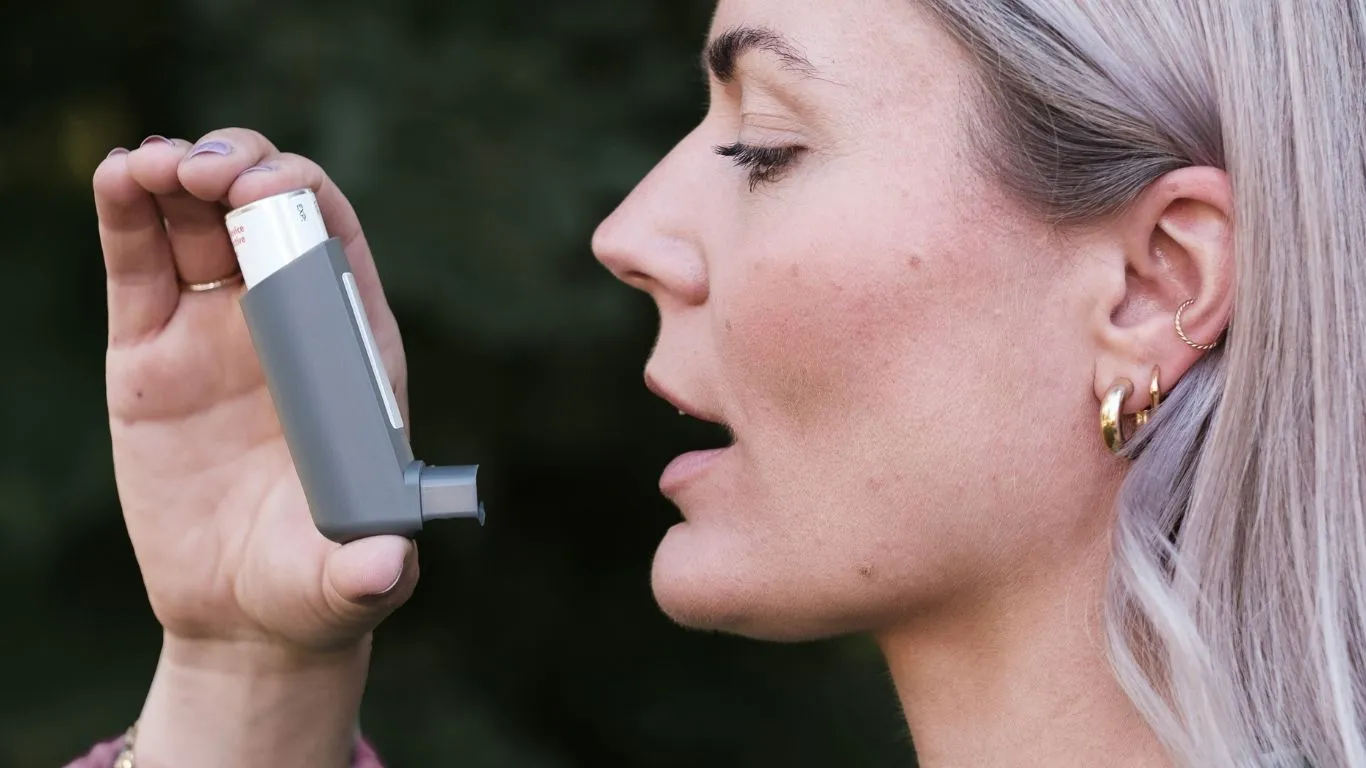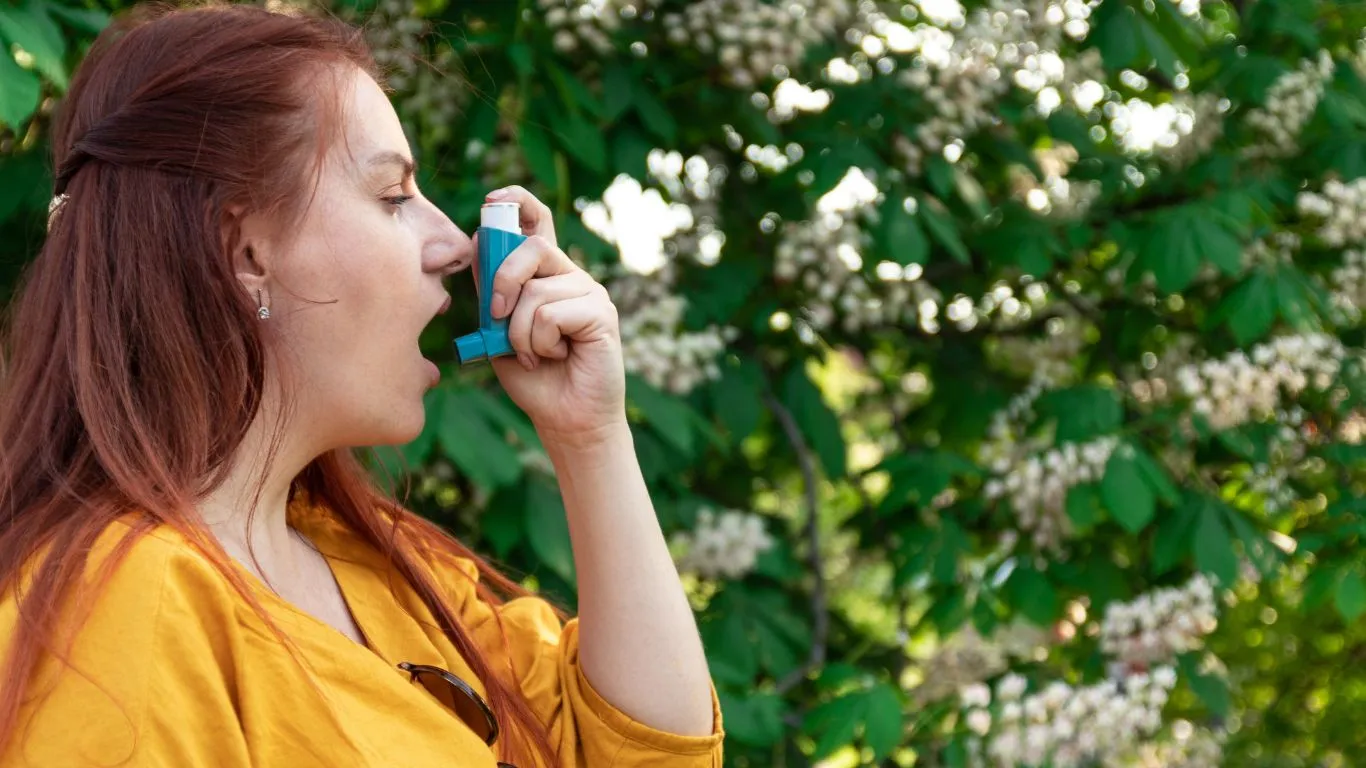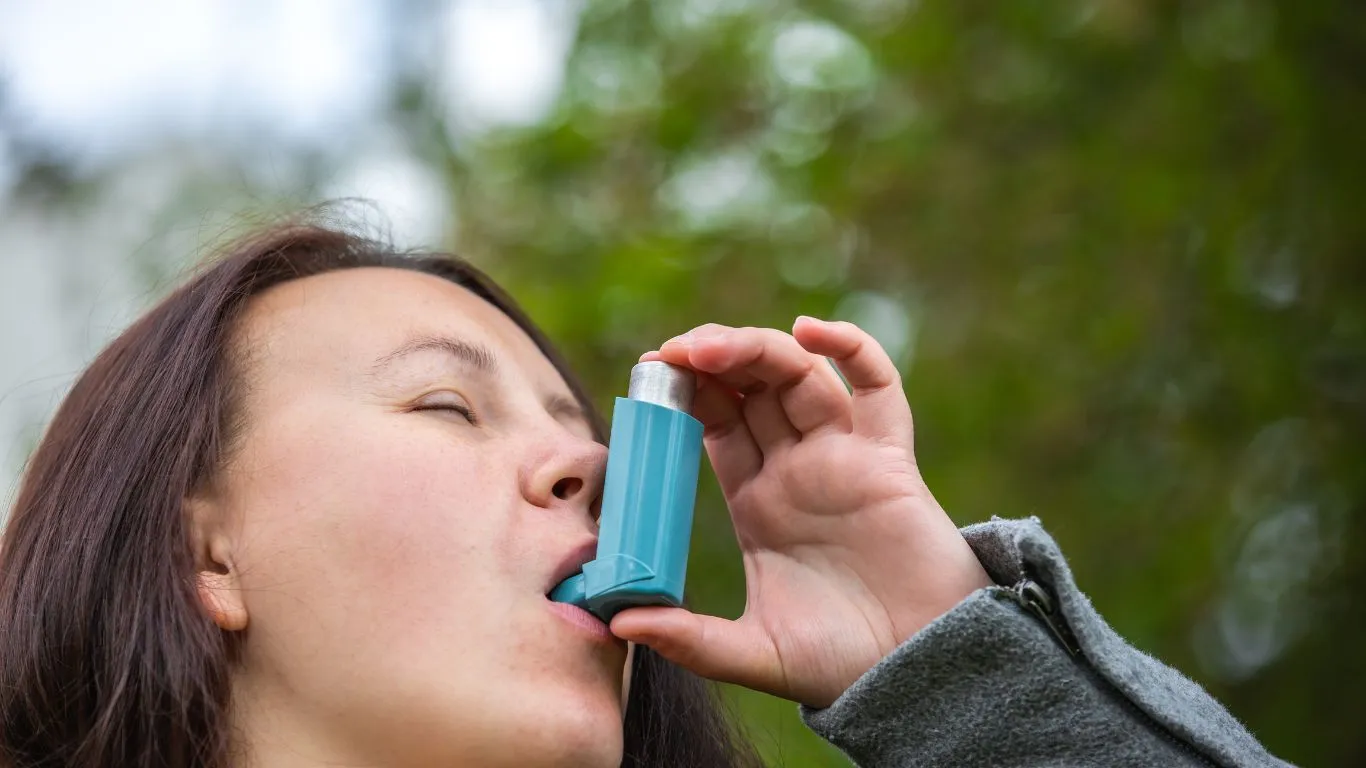The Best Allergy Covers for Asthma: Breathe Easy & Sleep Better
When it comes to managing asthma, one of the biggest game-changers in my own journey—and for many of my patients—has been investing in the best allergy covers for asthma. If you wake up with a tight chest, a stuffy nose, or endless sneezing, your bedding might be secretly working against you. Dust mites, pet dander, and even mold love to settle into mattresses and pillows, turning your sleep sanctuary into an asthma trigger zone. The good news? The right allergy-proof covers can make a world of difference.
Why Allergy Covers Are a Must-Have for Asthma Sufferers

Let’s be real—no one wants to wake up gasping for air. I learned this the hard way when my own asthma would flare up at night, despite using HEPA filters and keeping my bedroom spotless. The missing piece? My bedding. That’s when I discovered that dust mites are a leading asthma trigger, thriving inside mattresses, pillows, and blankets.
Here’s why allergy covers are a game-changer:
- They create a barrier – High-quality encasements block dust mites, pollen, and pet dander from settling into your bedding.
- Breathable yet protective – Unlike plastic-like covers that trap heat, modern allergy covers use advanced breathable fabrics.
- Hypoallergenic materials – Designed to minimize irritation and allergic reactions.
- Easy to clean – Many are machine washable, helping keep allergens at bay.
Once I switched to certified allergy-proof covers, I noticed fewer nighttime symptoms almost immediately. No more waking up congested or wheezing—it was a total game-changer.
How to Choose the Best Allergy Covers for Asthma

Not all allergy covers are created equal. Some claim to be “hypoallergenic” but don’t actually block microscopic allergens. So, how do you know you’re getting the right one? Based on my personal experience and research, here’s what to look for:
1. Material Matters
Some materials are better at keeping allergens out while still being comfortable:
- Woven microfiber – Ultra-fine fabric that prevents allergens from passing through.
- Polyurethane-backed fabric – Provides waterproof protection while staying breathable.
- 100% organic cotton – Great for those with sensitive skin, but ensure it’s tightly woven.
2. Pore Size: The Smaller, the Better
Pore size refers to how tightly woven the fabric is. You want a cover with a pore size of 5 microns or less—this ensures even the tiniest allergens can’t get through.
3. Certification Matters
Look for allergy covers certified by organizations like:
- Asthma & Allergy Friendly™ Certification
- OEKO-TEX® Standard 100 (ensures no harmful chemicals)
- GREENGUARD Gold (tested for low chemical emissions)
One mistake I made early on was buying a “hypoallergenic” cover that wasn’t certified. It barely helped, and I kept waking up congested. Once I switched to a properly certified, tightly woven cover, my symptoms dramatically improved.
Top Allergy Covers for Mattresses, Pillows, and Duvets

To make life easier, I’ve rounded up some of the best allergy covers that have worked for me and my patients. Here’s what stands out:
1. Best Overall: Mission Allergy Premium Microfiber Covers
- Pore size: Less than 2 microns
- Material: Soft, breathable microfiber
- Certifications: Certified Asthma & Allergy Friendly™
These covers are my absolute favorite. They’re soft (no crinkly plastic feel!), breathable, and completely block dust mites. I noticed an improvement in my nighttime asthma within just a few days.
2. Best for Budget: SafeRest Premium Hypoallergenic Encasement
- Pore size: Around 5 microns
- Material: Cotton terry with a breathable waterproof membrane
- Certifications: OEKO-TEX® Standard 100
Great for those on a budget, this cover protects against dust mites while adding waterproofing. It’s not as breathable as some higher-end options, but it’s a solid choice.
3. Best Organic: Sleep & Beyond Organic Cotton Protector
- Pore size: Around 5 microns
- Material: 100% organic cotton
- Certifications: GOTS Certified (Global Organic Textile Standard)
If you have sensitive skin, this is a fantastic natural option. Just keep in mind that organic cotton covers don’t block allergens quite as well as microfiber options.
How to Maintain Allergy Covers for Maximum Protection

Alright, so you’ve got your hands on the best allergy covers for asthma, but here’s something I’ve learned firsthand: just having them isn’t enough. If you don’t maintain them properly, they won’t do their job. I made this mistake early on—thinking my covers were a “set it and forget it” solution—until my asthma symptoms started creeping back. Turns out, regular washing and care are just as important as picking the right covers.
1. Wash Regularly (But the Right Way)
Dust mites and allergens can still settle on the surface of your covers, so washing them is crucial. Here’s what I recommend:
- Frequency: Wash your pillow and mattress covers every 2-4 weeks. Duvet covers can go a little longer, around once a month.
- Water Temperature: Hot water (130°F or higher) kills dust mites, but always check the label to avoid damaging the fabric.
- Detergent Choice: Use a gentle, fragrance-free detergent to avoid irritating sensitive airways.
2. Drying Matters
After washing, drying your covers properly is just as important. If possible, dry them on high heat to eliminate any remaining allergens. Some materials, like organic cotton, may shrink if overheated, so air drying can be a safer option.
3. Vacuuming for Extra Protection
Even with a great allergy cover, I like to take an extra step and vacuum my mattress and pillows when I strip the bed. Using a vacuum with a HEPA filter helps capture allergens that might still be lurking.
Additional Ways to Reduce Bedroom Allergens

Allergy covers are a fantastic first step, but if you’re serious about creating a truly asthma-friendly sleep space, you’ll want to layer in a few extra precautions. I went all-in on this approach, and the difference was night and day.
1. Ditch the Heavy Fabrics
Dust mites love soft, plush materials. That means carpets, heavy curtains, and upholstered furniture can be a problem. If possible, swap out thick curtains for washable cotton or synthetic blinds, and choose hardwood or tile flooring over carpet.
2. Use HEPA Air Purifiers
One of the best investments I made was getting a HEPA-certified air purifier for my bedroom. It helps trap dust, pet dander, and even mold spores that might otherwise settle on your bedding. If you have pets, this is a must-have!
3. Keep Pets Off the Bed
I get it—this one is tough. I used to let my dog sleep at the foot of my bed, but once I learned how much pet dander can trigger asthma, I had to make a change. Now, he has his own cozy bed on the floor, and my lungs thank me for it.
4. Control Humidity Levels
Dust mites thrive in humidity levels above 50%, so keeping your bedroom humidity between 30-50% can make a huge difference. A dehumidifier can help, especially in warmer months.
Common Myths About Allergy Covers (And the Truth!)

When I first started researching allergy-proof bedding, I came across a ton of misinformation. Let’s clear up some of the biggest myths I’ve heard from patients—and even believed myself at one point.
1. Myth: “Plastic Mattress Covers Work Just as Well”
Truth: While plastic covers do block allergens, they’re terrible for comfort. They trap heat, crinkle every time you move, and honestly, I couldn’t get a good night’s sleep with one. Modern fabric-based allergy covers are just as effective without turning your bed into a sauna.
2. Myth: “If You Have a Hypoallergenic Pillow, You Don’t Need a Cover”
Truth: Hypoallergenic pillows are great, but they don’t block dust mites. I learned this the hard way—spending money on high-end hypoallergenic pillows, only to realize my symptoms persisted. A proper encasement is the real game-changer.
3. Myth: “All Allergy Covers Are the Same”
Truth: Not even close! Some are just glorified fabric cases that don’t actually block microscopic allergens. The key is looking for tightly woven fabric (5 microns or smaller) and proper certifications.
4. Myth: “Washing Regular Sheets is Enough”
Truth: Regular sheets help reduce allergens, but they don’t stop dust mites from living inside your mattress and pillows. That’s why an encasement is essential—it seals them out completely.
When I finally invested in high-quality allergy covers (after falling for too many gimmicks), the improvement in my asthma symptoms was almost instant. No more waking up stuffy, no more wheezing in the morning—it was like I could breathe freely again.
Real-Life Success Stories: How Allergy Covers Changed Sleep for Asthma Patients

One of the best parts of my work as an asthma expert is hearing from people who’ve finally found relief. Over the years, I’ve had countless patients tell me how switching to the best allergy covers for asthma made a dramatic difference in their sleep quality and overall health. Here are just a few stories that might sound familiar.
1. Sarah’s Story: From Constant Wheezing to Restful Nights
Sarah, a 35-year-old teacher, struggled with nighttime wheezing for years. She had tried air purifiers and regular cleaning, but her asthma symptoms remained persistent. When we discussed her bedroom environment, she realized she had never considered dust mites hiding in her bedding. After switching to certified asthma-friendly mattress and pillow covers, her symptoms improved within a week. She finally got the uninterrupted sleep she had been missing for years.
2. Jake’s Experience: Reducing Allergy Medication Dependence
Jake, a college student, relied on daily antihistamines and inhalers to control his asthma. When he moved into a dorm, his symptoms worsened. It turned out that the shared mattress he was sleeping on was full of allergens. By using an encasement designed for asthma sufferers, he noticed he didn’t need his medication as frequently. His overall health improved, and he had more energy throughout the day.
3. Lisa’s Solution: A Pet-Loving Asthma Warrior
Lisa refused to give up sleeping near her cat despite her asthma. While I don’t usually recommend allowing pets in the bedroom, she found a great compromise—using a high-quality allergy-proof duvet cover and regularly washing her bedding. The combination helped her enjoy her furry friend’s company without waking up congested every morning.
How to Find the Right Allergy Cover for Your Needs

By now, you know why allergy covers matter, but with so many options out there, how do you pick the right one? I always tell my patients to focus on these three things:
1. Identify Your Main Triggers
Are you more sensitive to dust mites, pet dander, or mold? Some covers specialize in blocking specific allergens. For example:
- For dust mites: Choose a tightly woven fabric with a pore size of 5 microns or less.
- For pet dander: Look for a high-quality barrier fabric with electrostatic properties.
- For mold resistance: Opt for covers with moisture-wicking or waterproof properties.
2. Match the Cover to Your Sleep Preferences
If you tend to sleep hot, go for breathable microfiber. If you prefer organic materials, GOTS-certified cotton is a solid choice. Just be sure that any cover you choose is officially tested for allergen protection.
3. Don’t Skimp on Quality
While cheaper covers might seem like a good deal, they often lack the tight weaving necessary to block allergens. Investing in a well-reviewed, certified asthma-safe cover will save you money in the long run.
Final Thoughts on Allergy Covers for Asthma
Taking control of your asthma starts with small, consistent changes—and upgrading your bedding is one of the simplest, yet most effective, ways to do it. After years of trial and error, I can confidently say that the best allergy covers for asthma truly make a difference. Whether you’re dealing with nighttime wheezing, congestion, or simply want to breathe easier, choosing the right protective bedding is a smart move.
If you’ve tried allergy covers and noticed improvements, I’d love to hear your experience! Feel free to share your thoughts in the comments or ask any questions—I’m always happy to help fellow asthma warriors find relief.
References
- Asthma & Allergy Friendly Certification
- American Academy of Allergy, Asthma & Immunology
- Asthma and Allergy Foundation of America
Disclaimer
The information provided in this article is for educational purposes only and should not be considered medical advice. Always consult with a healthcare professional before making changes to your asthma management routine.

Bianca Nala is a compassionate Nurse Practitioner with a strong background in primary and respiratory care. As a health writer for Healthusias.com, she combines her clinical expertise with a talent for clear, relatable storytelling to help readers better understand their health. Bianca focuses on topics like asthma, COPD, chronic cough, and overall lung health, aiming to simplify complex medical topics without losing accuracy. Whether she’s treating patients or writing articles, Bianca is driven by a single goal: making quality healthcare knowledge accessible to everyone.






